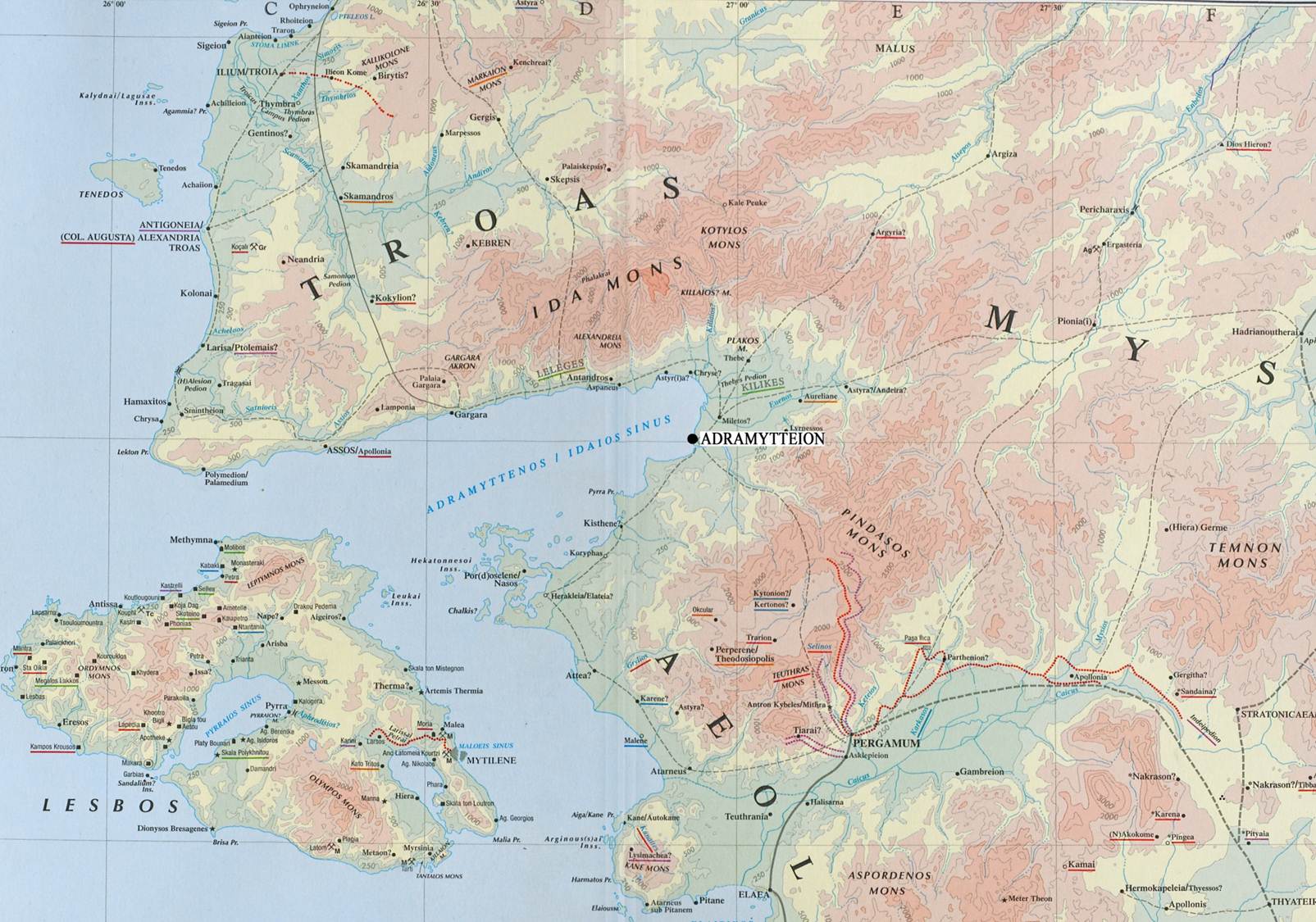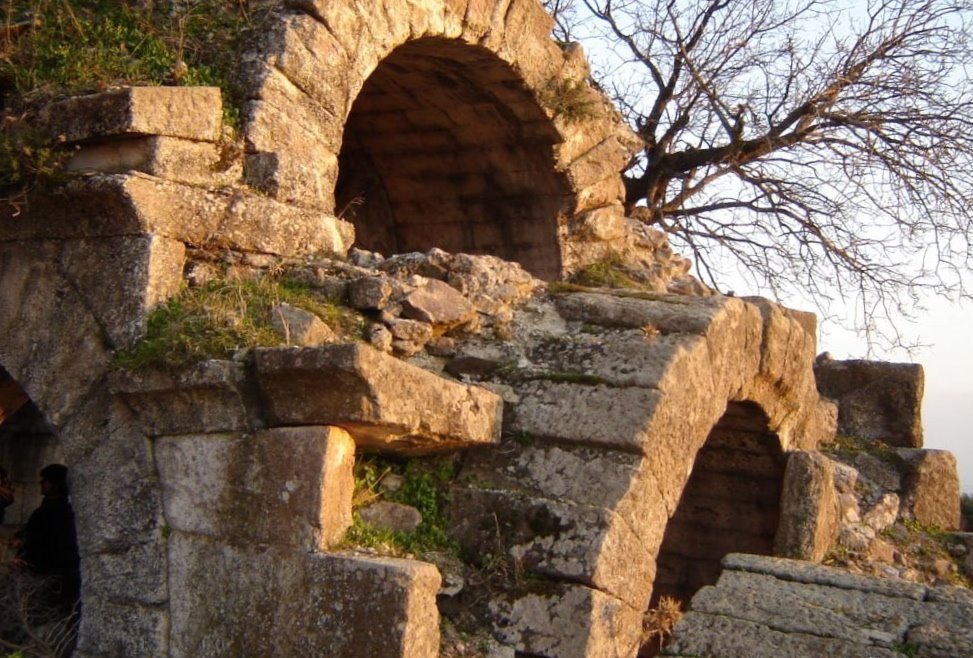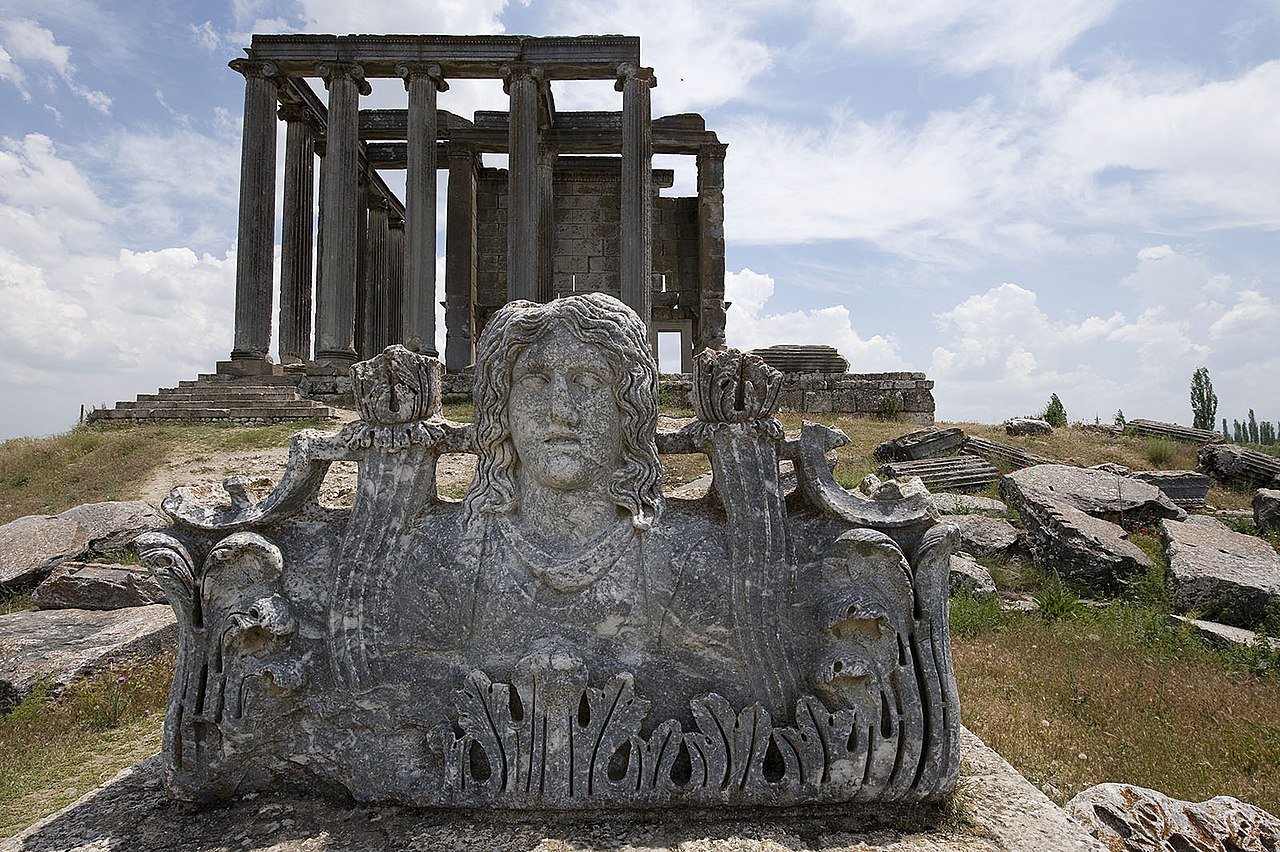Şehir, deniz seviyesinden 600 metre yükseklikte bir plato üzerinde, iç Karia'da yer almaktadır. Bugün Denizli'nin yaklaşık 80 kilometre batısındaki Geyre köyü yakınlarındadır. Şehir, MÖ 2. yüzyılda daha erken bir tapınak alanında kuruldu. Şehrin patron tanrıçası Afrodit kutsal alanı ve imparator Hadrian (MS 117-138) altında öne çıkan heykel okulu ile ünlüdür .
Afrodisias, MÖ 1. yüzyıldan itibaren Augustus'un koruması altına girdiğinde uzun bir refah süresine sahipti . MS 5. yüzyılda, yavaş yavaş belirsizliğe bürünerek daha sonra Türk Geyre köyü oldu. Bugün kalan kalıntılar bu zengin geçmişi yansıtmaktadır. 20. yüzyılda yapılan kazı çalışmaları Afrodisias'ın başlıca kamu eserlerinin çoğunu ortaya çıkarmıştır: Afrodit Tapınağı, tiyatro ilişkili bouleuterionu (meclis binası) ile büyük Agora , hamam kompleksi, stadyum ve Sebasteion, Afrodit, Augustus ve Julio-Claudian hanedanı.
Kazılar sırasında ortaya çıkarılan heykellerin ve heykelsi unsurların çoğu Afrodis heykeltraşlarının imzasını taşımaktadır. Afrodisias Müzesi'nde bulunmaktadırlar. 1979'da halka açıldı, 2008'de CE'ye bir zamanlar Sebasteion'un portikosunda duran büyüleyici eserleri sergilemek için yeni bir salon eklendi.
Aphrodisias
The beautiful ancient Greek city of Aphrodisias, still partly excavated, is one of the most important archaeological sites of the late Hellenistic and Roman period in Turkey. The city was located in inland Caria on a plateau 600 meters above sea level. Today it lies near the village of Geyre, some 80 kilometers west of Denizli. The city was founded in the 2nd century BCE on the site of an earlier shrine. It was famous for its sanctuary of Aphrodite, the city’s patron goddess, as well as for its sculptural school which rose to prominence under the emperor Hadrian (117-138 CE).
Aphrodisias enjoyed a long period of prosperity from the 1st century BCE onwards when it came under the protection of Augustus. In the 5th century CE, it gradually faded into obscurity, later becoming the Turkish village of Geyre. The ruins that remain today reflect this wealthy past. 20th century CE excavations have unearthed most of the major public monuments of Aphrodisias: the Temple of Aphrodite, the theatre, the large Agora with its associated bouleuterion (council house), the bath complex, the stadium and the Sebasteion, a temple complex dedicated to Aphrodite, Augustus and the Julio-Claudian dynasty.
Many of the statues and sculptural elements that have been unearthed during the course of excavations bear the signatures of Aphrodisian sculptors. They are housed in the Museum of Aphrodisias. Opened to the public in 1979 CE, a new hall was added in 2008 CE to display the fascinating works that once stood on the portico of the Sebasteion.








